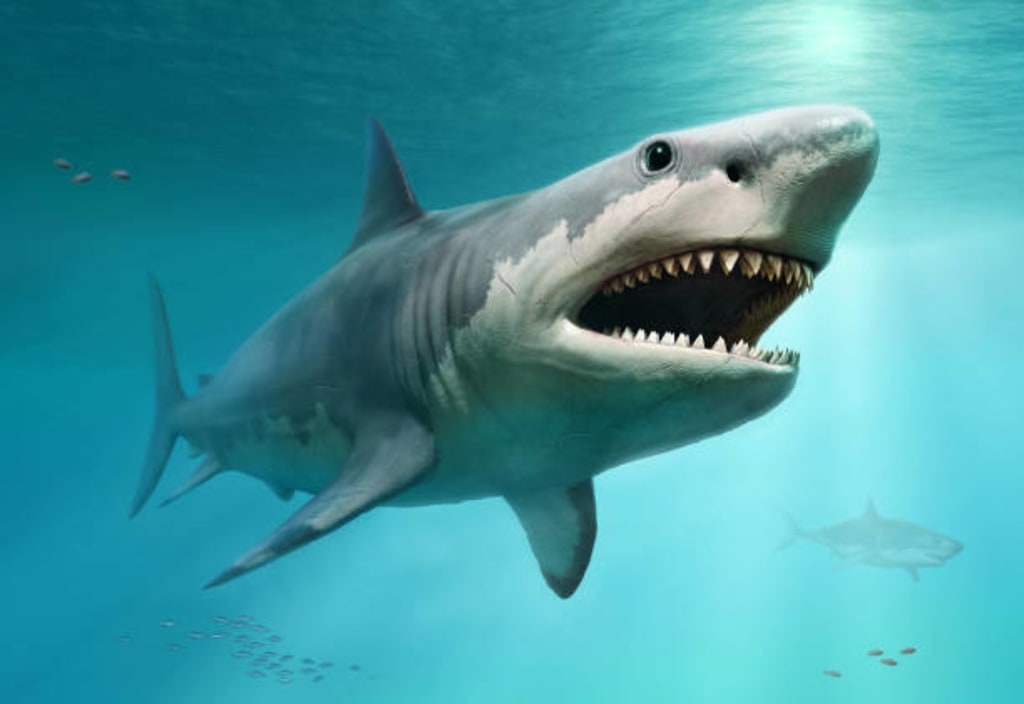Megalodon-King of the Oceans
Why did it go extinct?

The Megalodon, also known as Meg, traversed the oceans long after the extinction of dinosaurs triggered by a meteorite impact. It held the distinction of being among Earth's largest and most formidable predators, reigning as the preeminent giant shark. Approximately 3.6 million years ago, the last of its lineage vanished from our planet, leaving behind colossal teeth for contemporary archaeologists to uncover.
Numerous theories abound regarding the Megalodon's disappearance. Recent scientific findings may shed light on this enigmatic event. The Megalodon, translating to "Big Tooth," stood as the most massive shark in existence, thriving roughly 20 to 3.6 million years ago. Its dimensions were truly staggering; its bite surpassed even that of the formidable T-Rex and arguably any other predatory creature to have traversed our planet. This marine behemoth wielded exceptionally robust jaws spanning 9 to 10 feet wide, capable of accommodating two grown individuals side by side. Adorned with 276 teeth, each reaching up to 7 inches in length, these massive, serrated dental structures facilitated efficient meat consumption. With a length of up to 59 feet, double the size of a London double-decker bus, and a weight potentially exceeding 30 tons, the Megalodon reigned supreme as the uncontested sovereign of the seas.
However, the extinction of this magnificent species remains a subject of conjecture. Initial theories often compared the Megalodon to the great white shark, erroneously assuming a direct relationship between the two. Contrarily, the Meg shared more resemblance to the modern bull shark in its physical attributes, featuring a stout, flattened lower jaw and substantial pectoral fins that provided stability. Concurrently, the ancestors of today's great white sharks coexisted alongside the Megalodon. Despite its immense size and power, the Megalodon faced challenges owing to its comparative lack of agility, contrasting the swiftness of smaller and more nimble great whites.
Competition for sustenance emerged as a critical factor in the Megalodon's decline. While the adults could capture sizable prey like whales, their offspring faced vulnerability. Young Megalodons, smaller in size, potentially fell prey to the swift and cunning great whites, bull sharks, and tiger sharks. The escalating population of these smaller predators, alongside environmental shifts and diminished resources, likely contributed to the Megalodon's eventual demise.
A groundbreaking study posits another compelling theory, suggesting the Megalodon was a warm-blooded predator, capable of regulating its body temperature. Analysis of tooth enamel isotopes revealed a remarkable ability to maintain a body temperature approximately 13°F warmer than the surrounding water, categorizing it as potentially warm-blooded. However, during the Pliocene Epoch, a period lasting from around 5.3 million to 2.5 million years ago, global cooling ensued, accompanied by sea level fluctuations. These environmental changes posed challenges for the Megalodon's energy expenditure in maintaining elevated body temperatures amidst dwindling resources and heightened competition from emerging species like the great white shark.
This newfound understanding has broader implications, suggesting parallels between the Megalodon's challenges and contemporary marine predators grappling with ongoing climate change. Intriguingly, anecdotal sightings resembling the Megalodon have persisted, sparking debates and speculation among scientists. For instance, documented shark attacks along the New Jersey coast in July 1916 attributed to a colossal shark, purportedly larger than known species, continue to intrigue researchers.
More recently, in 1999, a photograph surfaced featuring a massive shark in the Pacific near Guadalupe Island, termed "Deep Blue." While some speculated it to be a Megalodon, experts identified it as a female great white shark, notably surpassing average size records. Similarly, encounters with other oversized sharks, such as the basking shark, occasionally fuel mistaken associations with the Megalodon or its kin. However, the basking shark's gentle nature, focused on filter-feeding rather than predatory behavior, contrasts sharply with the Megalodon's predatory prowess.
Fascinating accounts prompt continued exploration and discussion, offering insights into ancient and modern marine ecosystems.
About the Creator
Enjoyed the story? Support the Creator.
Subscribe for free to receive all their stories in your feed. You could also pledge your support or give them a one-off tip, letting them know you appreciate their work.





Comments (1)
This article impresses me; it's well-written and full of valuable information.